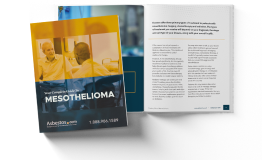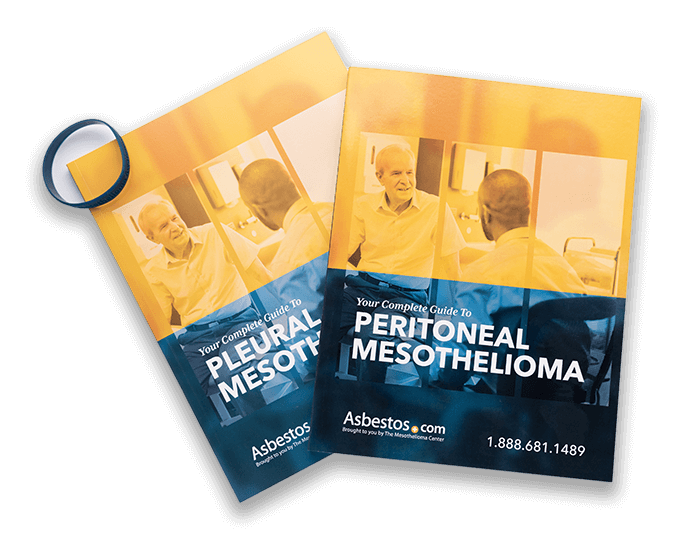Written by Michelle Whitmer | Scientifically Reviewed By Arti Shukla, Ph.D. | Edited By Walter Pacheco | Last Update: July 17, 2024
Asbestos Exposure in Washington
Washington is home to several large companies, including Microsoft, Boeing, Amazon and Starbucks. Washington’s economy has many industries that used asbestos. These include shipbuilding, oil refining, power production, aluminum processing, timber and paper production.
Many former workers got exposed to asbestos and are at risk of developing mesothelioma.
Occupational exposure is responsible for a majority of these deaths. Asbestos deposits also exist in Washington.
In November 2021, flooded communities in Whatcom County received warnings of asbestos exposure. The Sumas River and a decades-old landside on Sumas Mountain was the source. The area is rich in hazardous asbestos, which gets redistributed when floodwaters rise.
Local officials recommend wearing a respirator when cleaning up flood debris. They advised dampening the soil before digging and moving it. Officials are working on a project to contain the contaminated sediment, but it could take years to complete.
Washington’s Occupations at Risk
Paper mills, aluminum plants, power plants and other industries use heat-resistant materials. Asbestos has fireproofing characteristics and is a natural insulator. It was a perfect choice for manufacturing facilities to prevent dangerous fires.
Paper mills used asbestos adhesives and drying felts. Power plants used asbestos around wires, pipes, generators and boilers. Contaminated insulation was especially common within the manufacturing industry.
The U.S. Environmental Protection Agency reported that 33 locations in Washington received asbestos. Approximately 981 shipments of asbestos-containing vermiculite came from a Libby, Montana mine.
Most of these shipments went to Seattle and Spokane. Between 1948 and 1993, about 63,611 tons of vermiculite went to Washington. Vermiculite went throughout the U.S. under the brand name Zonolite.

Learn about your diagnosis, top doctors and how to pay for treatment.
Get Your Free GuideEnvironmental Areas at Risk
Asbestos deposits have also been a concern for Washington residents. Mountainous areas of the northeast part of the state have asbestos. It is above Spokane in the Okanogan Highlands and central Cascades. Chrysotile asbestos is present in serpentine rock deposits. Asbestos in serpentine rock was also discovered around Wenatchee and Ellensburg, but these sites were not mined.
Asbestos Mines
Washington’s asbestos production was limited to two sites: An amphibole deposit near Lyman in Skagit County and a mine near Alta Lake in Okanogan County. The narrow Lyman deposit was mined in 1891 over a distance of 75 feet. Records from Engineering and Mining Journal show the first shipment from the mine was approximately 75 tons. The mine is located near Hamilton across the Skagit River from Lyman.
The mine in Okanogan County was located in an open pit about one mile from Alta Lake. Mining operations occurred in 1921 by the Asbestomine Company. The amphibole asbestos from this mine was woven together and incorporated into paint and plaster. The workers who helped process asbestos from these mines were heavily exposed to the toxic mineral.
Sumas River
Another source for exposure in Washington can be found around Swift Creek and the Sumas River in Whatcom County.
EPA officials have been monitoring the situation to determine the amount of asbestos-containing material that might be flowing into the two bodies of water as a result of Sumas Mountain landslide deposits.
The U.S. Geological Society measured the suspended sediment in the Sumas River and discovered it contains up to 37 percent chrysotile asbestos, according to its 2016 report. Other measurements show the clear, flowing river water contains up to 19.5 million chrysotile asbestos fibers per liter.
Asbestos-Talc Products of Washington Inc. operated a nearby quarry that may be the cause of the asbestos in the river. Airborne asbestos is a concern when water levels are low.
Job Sites with Known Asbestos Exposure:
- Crown Zellerbach Paper Mill
- Chevron Chemical Plant
- Alcoa Aluminum Plant
- Kaiser Aluminum
- ARCO Oil Refinery
- Dow Chemical Plant
- FFTF Nuclear Power Plant
- UNOCAL Chemical Plant
- INTALCO Aluminum
- Reynolds Metals Aluminum Plant
- Chevron Cracking Plant
- Fairchild Air Force Base
- Bremerton Puget Sound Naval Shipyard
- Lockheed Shipbuilding & Construction
- Duwamish Shipyard, INC.
- Tacoma Dry Dock Shipyard
- Columbia Aluminum
- Intalco Aluminum
- Hanford Nuclear Site
- Centralia Washington Public Power Plant
Washington Elementary
Washington Elementary School in Berkeley was a source for exposure in 2010. Starting in January and continuing through May, teachers and students who attended classes in a specific classroom may have inhaled fibers through exposed flooring tiles. On June 25, after the school year was over and several complaints about potential exposure were made, the Occupational Safety and Health Administration officially closed down the classroom for abatement. The floor tiles were removed on July 9.
Hanford Nuclear Site
The Hanford Nuclear Site was designated as a Superfund Site in 1988. Although radiation was the primary concern surrounding the Hanford-based plant, studies showed workers were also exposed to asbestos. A study from 2009 on former construction workers from the Hanford Site showed they were 11 times more likely than the general public to develop mesothelioma cancer.
Regulations
The Air Program at the Department of Ecology is in charge of protecting the public from asbestos exposure in Washington. Before a renovation or demolition project involving asbestos can be carried out in the state, the local air authority should be contacted for regulatory information.
Regulations in Washington require an asbestos hazard survey to be performed by a certified Asbestos Hazard Emergency Response Act inspector. The survey is often referred to as a “good faith survey” or a “Phase 1 or 2 site assessment.”
This Page Contains 11 Cited Articles
The sources on all content featured in The Mesothelioma Center at Asbestos.com include medical and scientific studies, peer-reviewed studies and other research documents from reputable organizations.
- Pae, C. (2021, November 18). Whatcom County Health warns of naturally-occurring asbestos exposure from floodwaters. Retrieved from https://www.king5.com/article/news/local/disaster/whatcom-county-health-warns-of-naturally-occurring-asbestos-exposure-from-floodwaters/281-63d6f1aa-fd64-45f4-838c-48eac7d2b24f
- Mangold, C.A., Beckett, R.R., and Bessmer, D.J. (1970). Asbestos Exposure and Control at Puget Sound Naval Shipyard. http://handle.dtic.mil/100.2/AD715808
- National Heart, Lung and Blood Institute (2011). What are Asbestos-Related Lung Diseases? http://www.nhlbi.nih.gov/health/dci/Diseases/asb/asb_treatment.html
- U.S. Environmental Protection Agency. (2011). Asbestos: Vermiculite. https://www.epa.gov/asbestos
- Van Gosen, B. (2010). Reported Historic Asbestos Mines, Historic Asbestos Prospects, and Other Natural Occurrences of Asbestos in Oregon and Washington. http://pubs.usgs.gov/of/2010/1041/downloads/Plate.pdf
- Department of Ecology. (2010, Apr. 28). States Asbestos Regulations and Guidance. http://www.ecy.wa.gov/programs/hwtr/demodebris/pages2/asbregsstate.html
- Barglow, R. (2010, Aug. 23). Children Exposed to Asbestos at Washington Elementary School. http://www.berkeleydailyplanet.com/issue/2010-08-24/article/36121?headline=Children-Exposed-to-Asbestos-at-Washington-Elementary-School
- U.S. Environmental Protection Agency. (2011). Sumas Mountain Asbestos. http://yosemite.epa.gov/r10/cleanup.nsf/sites/swiftcreek
- Centers for Disease Control and Prevention, National Center for Health Statistics. (2018). Underlying Cause of Death 1999-2017 on CDC WONDER Online Database. http://wonder.cdc.gov/ucd-icd10.html
- PRWeb. (2009, November 20). Jury Assesses a $10.2 Million Verdict for Retired Washington Paper Mill Worker Suffering from Mesothelioma. http://www.prweb.com/releases/brayton-purcell/WA-mesothelioma-verdict/prweb3239734.htm
- USGS. (2016). Transport and Deposition of Asbestos-Rich Sediment in the Sumas River, Whatcom County, Washington. https://pubs.usgs.gov/sir/2015/5177/sir20155177.pdf








